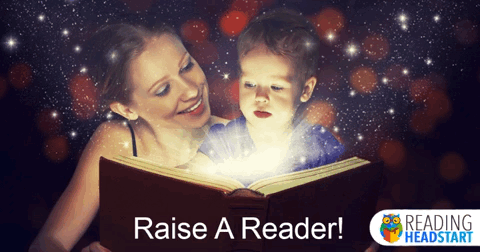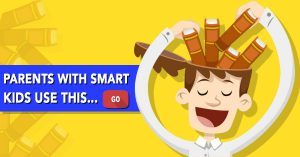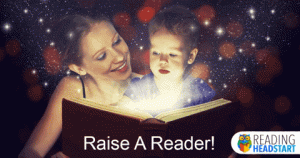Francois Bissonnette's Blog
October 5, 2018
Nanook and the TomToms
Children’s Books: Nanook and the TomToms: Bedtime stories for kids 3 to 8 years old
NEW: Purchase this Book and get access to the Read Aloud VIDEO BOOK version for FREE!
Nanook must find his dog who disappeared in a world full of strange creatures.
A FUN READ!
Great Story For Kids 3 to 8 Years Old!
To spend a pleasant moment with your kid, read Nanook and the TomToms!
Children’s Books Nanook and the TomToms is the new edition of Nanook in Zirons Land
Excellent Bedtime Story for Children!
Fun little story of fantasy adventure, and meeting new friends and overcoming fear, and learning colors and shapes. Another very fine book by master storyteller François Bissonnette. -Grady Harp, October 17
I absolutely enjoyed reading this book to my grand kids and it brought a few smiles to our faces. Author Francois Bissonnette writes in a wonderful style that guarantees the attention of young minds. If you ever wanted to bond even more with your children or grandchildren, this would be a lovely read to share with them. It seems to me that this book has been created with a lot of love and joy and it is obvious that the author really enjoys creating such wonderful stories. I have shared your stories with my own family and we have all found great delight in them. Thank you for sharing with us the gift that you have obviously worked so hard to refine. I trust your book will soon be on the best seller list. If not, it should be! We’ll be looking forward to seeing what’s coming next. Five stars from us. Well done! -Piaras
Subscribe to our newsletter to stay up to date with our new posts, new books and promotions.
Email Address
The post Nanook and the TomToms appeared first on Magical Children's Books.
Letter Tracing – Handwriting workbook
Handwriting workbook – Letter Tracing
Letter Tracing Uppercase, Lowercase Letters and Words!
Letter Tracing Special Animals
Letter Tracing Special 3 Letter Words
Letter Tracing Special 4 Letter Words
Letter Tracing Special 5 Letter Words
Handwriting workbook for preschoolers
● Lots of Letter Tracing Practice for Kids!
● Essential school skills!
● A fun way for children to learn to write!
● Uppercase, Lowercase Letters and 3 Letter Words!
● Essential writing practice for preschool and kindergarten
Great handwriting book for kids! Your child will learn and have fun at the same time!
Subscribe to our newsletter to stay up to date with our new posts, new books and promotions.
Email Address
The post Letter Tracing – Handwriting workbook appeared first on Magical Children's Books.
October 4, 2018
Halloween Mandala
Halloween Mandala vol 1
https://www.amazon.com/gp/product/1517548969
Coloring Books for Adults: Halloween Mandala
Enjoy this Stress Relieving Adult coloring book, which is filled with 22 coloring pages of fun and beautiful Mandalas.
This coloring book provides hours and hours of stress relief and creative expression. Pages are printed on one side only.
These 22 fun and peaceful mandalas designs will captivate colorists of all ages.
Relax, be creative, and have fun!
GRAB YOUR COPY NOW!
Halloween Mandala vol 2
https://www.amazon.com/gp/product/197581374X
Coloring Books for Children and Adults: Halloween Mandala vol 2
Enjoy this Stress Relieving children coloring book, which is filled with 35 coloring pages of fun and beautiful Halloween Mandalas.
This coloring book provides hours and hours of stress relief and creative expression. Pages are printed on one side only.
These 35 fun Halloween mandalas designs will captivate colorists of all ages.
Relax, be creative, and have fun!
The post Halloween Mandala appeared first on Magical Children's Books.
September 1, 2018
How to Teach your Child to Read in 12 Weeks
Our learn to read program is extremely effective at helping parents teach their children to read.
We developed it and used it to teach all of our children to read before they were 3 years old, and the success stories and feedback we have received are phenomenal.
“The final result turned to be an absolutely great success! He is so happy that he can read without help, telling me with joy how much he read every day when I came home.”
-Renee
“We started your program about a month before he started kindergarten, and I’m just amazed how fast he’s learned to read in a short period of time. I wish I would have discovered your program a long time ago.”
-Martha B.
“My son could barely blend words and was reading below expectation before I came in contact with your program. I have had my reservation with numerous children programs but I fell in love with yours immediately I watched the videos.I have some recordings of my son during the review of the lesson 16 and he blended the words perfectly. Many thanks,”
-Sam
The post How to Teach your Child to Read in 12 Weeks appeared first on Magical Children's Books.
August 29, 2018
A Bad Case of Stripes
A Bad Case of Stripes is written and illustrated by David Shannon and read by Sean Astin.
Camilla Cream loves lima beans, but she never eats them. Why? Because the other kids at her school don’t like them. And Camilla is very, very worried about what other people think of her. In fact, she is so worried that she is about to break out in… A Bad Case of Stripes.
The post A Bad Case of Stripes appeared first on .
How to Teach Your Baby to Read
Teaching your baby to read is becoming more and more high priority for parents now as it becomes clear that learning to read at a very young age offers numerous advantages for the child once he or she begins school.
Studies have consistently found that teaching a baby to read and helping children develop phonemic awareness well before entering school can significantly improve their development in reading and spelling. However, when it comes to teaching babies to read, there are two main teaching methods.
These two main methods of teaching a baby or child to read are the whole language method, and the phonics and phonemic awareness method (the phonetic approach), which should be the preferred teaching method in helping children learn to read. Some prefer the whole language method, while others use the phonics approach, and there are also educator that use a mix of different approaches. With the Look-say approach of whole language learning, a child begins with memorizing sight words, and then taught various strategies of figuring out the text from various clues.
The whole language method produces inaccurate and poor readers compared to students of the phonetic approach. Using the whole word approach, English is being taught as an ideographic language such as Chinese.
I always say that if your baby can speak, then you can begin to teach your baby to read. I won’t mention any names here, but I think most parents are probably aware of one very popular “reading” program, which is a whole word approach. Using this method, your baby simply learns to memorize the words without actually reading the words. There is no scientific evidence to suggest that teaching your baby to read using the whole word approach is an effective method. But, there are numbers of studies which have consistently stated that teaching children to reading using phonemic awareness is a highly effective method.
Teaching phonemic awareness to children significantly improves their reading more than instruction that lacks any attention to phonemic awareness. – statement made by the National Reading Panel[1]
I do think that the debate on the effectiveness of teaching a baby to read using either the whole language or phonics method is settled by the statements made by the National Reading Panel. They reviewed over 1,960 different studies to make their conclusions.
In fact, while my wife was pregnant with our first child, I began doing extensive research on the subject on how to teach my baby to read – after birth, of course. Like most parents I also came across the popular whole word teaching approach being heavily marketed. Seeing the infomercials got me quite excited actually, seeing the babies on TV “reading”. But after trying it out, it occurred to me that the baby wasn’t actually “reading”, but actually “memorizing”, and I thought to myself, how are my children supposed to read newer, and more complicated words as they grow older without an appropriate method of decoding those words? This is where my long and extensive research into phonics and phonemic awareness began.
After many hours of research and learning as much as I could, I felt comfortable enough with our simple phonemic awareness teaching method, that my wife and I began giving brief 3 to 5 minute lessons to our daughter, aged 2 years and 8 months. Within just a few short weeks, her reading ability (and I mean actual reading ability, not memorization) was astounding, even for me as the parent who gave the reading instructions. Friends and family alike, were simply flabbergasted at what our daughter was capable of reading at just 2 years and 11 months.
I simply can’t imagine this kind of progress possible with the whole word approach – just think of the tens and hundreds of words a young child would have to memorize!
Our son is fast approaching the age where he will soon be able to speak, and we will be using the same simple step-by-step method to teach him to read. If you’d like to learn more about our simple, effective, step-by-step program, please click the image below.
The post How to Teach Your Baby to Read appeared first on .
Hey That’s My Monster
Hey That’s My Monster is written by Amanda Noll, illustrated by Howard McWilliam and read by Lily Tomlin.
When Ethan looks under the bed for his monster, he finds this note instead: “So long, kid. Gotta go. Someone needs me more than you do. –Gabe” How will Ethan ever get to sleep without his monster’s familiar, comforting snorts? And who could need Gabe more than Ethan does?
Gabe must have gone to Ethan’s little sister’s room! She has been climbing out of bed every night to play, and obviously needs a monster to help her get to sleep – but not HIS monster! Ethan tries to help his sister find her own monster, but none are the perfect blend of cute and creepy. Just when it seems that Ethan will lose his monster forever, an uninvited, tutu-toting little monster full of frightening fun appears.
The post Hey That’s My Monster appeared first on .
August 28, 2018
Teaching Letters, Names and Sounds
So, you want to teach your child to read, but before a child can learn to read, he or she must first learn at least some of the letters in the alphabet, their names, and the sounds that they represent. To be able to read, a child must be able to recognize the letters, know the sound of the letters, and be able to recognize the letters quickly and say the sound without hesitation.
There is plenty of discussion and disagreement on whether it’s better to teach children using whole language programs or using methods which incorporate phonics and phonemic awareness instructions. I think the debate on this is settled when the National Reading Panel stated from their findings of reviewing over 1,900 studies that phonics and phonemic awareness produces superior reading results than whole language programs.
There is also some debate on whether to teach your child only letter names, or only the sounds which the letters represent. However, studies have also settled this debate by finding that teaching a child alphabet names and sounds together produces the best results.
In fact, studies have found that there is little value in teaching preschoolers letter forms or letter sounds separately. This was indicated by an Australian study involving 76 preschool children. The children received 6 weeks of training in either letter awareness, phonemic awareness, or control tasks, and then received another 6 weeks of training in either letter-sound correspondence or control tasks. The study found that training in either phoneme or letter awareness assisted with learning of letter-sound correspondences, and that the phonemically trained children group had an advantage on recognition tasks. The study found that there is little value in training in letter form or letter sounds separately. [1]
As you can see, there is basically no point in only teaching either the names of the alphabet letters, or the sounds the letters make. A child must learn the name and the sound of the alphabet letter. When teaching your child the alphabet, instead of simply teaching them the name of the alphabet such as “this is the letter A”, teach them like so:
“This is the letter A, and the letter A makes the /A/ sound.” (note: the /A/ denote the sound “A” makes, and not its name). Similarly, you can teach your child the other alphabet letters in this way including both name and sound of the letter. This is the way I teach my children the alphabet letters. Other studies have also determined that teaching the letter names and sounds together helped children learn.
58 preschool children were randomly assigned to receive instructions in letter names and sounds, letter sound only, or numbers (control group). The results of this study are consistent with past research results in that it found children receiving letter name and sound instruction were most likely to learn the sounds of letters whose names included cues to their sounds. [2]
To be able to effectively teach your children the sounds of letters, you must first master the proper pronunciation of the letters yourself. It is critical for you as a parent to be able to first say the sounds of the letters correctly before teaching your children, and this is much tougher than it may seem.
Notes:
1. J Exp Child Psychol. 2009 Sep;104(1):68-88. Epub 2009 Mar 5.
The genesis of reading ability: what helps children learn letter-sound correspondences?
Castles A, Coltheart M, Wilson K, Valpied J, Wedgwood J.
Macquarie Centre for Cognitive Science, Macquarie University, Sydney, NSW 2109, Australia.
2. J Exp Child Psychol. 2010 Apr;105(4):324-44. Epub 2010 Jan 25.
Learning letter names and sounds: effects of instruction, letter type, and phonological processing skill.
Piasta SB, Wagner RK.
Preschool Language and Literacy Lab, The Ohio State University, Columbus, OH 43210, USA.
How To Teach Your Child To Read In Easy Lessons
Click here for a simple, step-by-step program that can help your child learn to read
The post How To Teach Your Child To Read In Easy Lessons appeared first on .
20 Reasons Why Children Should Read
1. Reading expands a child’s vocabulary.
2. Reading makes your child smarter, literally! That’s a fact stated by researchers Cunningham and Stannovich in their report titled What Reading Does for the Mind. In their research, they also stated that reading not only increases your intelligence, it can even “help children compensate for modest levels of cognitive ability.”
3. You can’t comprehend what you can’t read.
4. Early reading skills directly relates to a child’s future academic success.
5. The more you read, the better you are at it. This is a simple fact.
6. This is described by the Matthew Effect of reading where early success in reading leads to increased success later on, and conversely, children who are poor readers will have difficulty catching up, and some never do.
7. Reading early helps build independence and self confidence.
8. It opens up a whole new world of understanding and comprehension of the world around the child when the child is able to read.
9. It helps children make more sense of the world around them.
10. For safety! Early reading allows children to read and understand important labels and warning signs – such as “poison”, “stop”, “beware of dogs”, “danger”, and so on…
11. It increases your knowledge. The more your read, the more you know.
12. It takes you to places you’ve never been to before, and it enhances your imagination.
13. You learn about things, places, history, science, ideas, and so much more that you otherwise would not through reading.
14. Reading is a form of entertainment! It is fun! Would you rather sit your child in front of the idiot box or have your child read a fulfilling book? Rhetorical question…
15.The act of reading works as an exercise to improve reading fluency and comprehension.
16. Reading to and with your children is one of the most rewarding bonding times for a family.
17. Reading helps you relax, and it is free!
18. Reading more helps you improve your writing skills.
19. it teaches you about grammar, sentence structures, and enhances your communication skills.
20. Books broaden your outlook and your horizons.
The post 20 Reasons Why Children Should Read appeared first on .










